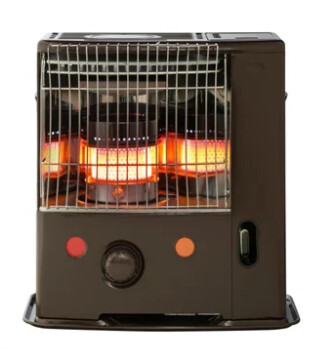I don’t know anyone who uses one, I thought they were a bit of a niche thing maybe for old people. Aren’t they a fire and/or CO hazard?
Maybe it is an age thing and a money thing. At least two of our friends (in their seventies) use them, not least because they think they are a cheap form of heating in winter
They are probably better used in a house with natural ventilation - ie draughty places. I think they have safety devices built in to kill the flame if they are upturned or disturbed.
We have two pétrole (paraffin?) stoves a bit like the picture I’ve posted.
They are for use in OH’s workshop when the weather is very cold… and, yes, they have safety features.
When/if folk have heating problems (boiler on the blink, no electric or whatever) we offer to lend these stoves.
When the offer is accepted the stove(s) are returned asap since it’s not an ideal way of heating the home, not for long term usage.
OH checks them over to make sure they’re in tip-top condition, then puts them by for his own use as and when.

My mother used to use a spin-dryer something like this one Thomas laundry spinner CENTRI 776 SEK | Conrad.com
They spin at huge speed extracting a great deal of water as a lot of folk will remember.
Still got one! Inherented from my Mum, halves drying time minimum.
When the paraffin is on offer you see people with very full trollies in the Brico.
Is paraffin=kerosene=fioul?
We typically have a short not-too-severe winter here and my partner a fan. Modern ones with the safety features like in Stella’s picture and the gas bottle ones of a similar size.
Abolutely essential to ventilate though but our climate is very suitable for them. Used with care they are very economical.
If anyone’s drying stuff indoors though it’s best to start outdoors. Even on the coldest day, unless you’re somewhere with a damp climate and especially even if there’s a cold wind you can get a big chunk of the moisture out by starting off drying with a few hours outside even if you really must do the rest of the drying inside.
Rather than festooning radiators which especially indoors is a no-no as damp can get into the walls, I use the Lakeland Dry:Soon airers and cover them. You don’t need their lovely but expensive covers just put a large sheet over whilst drying. Helps catching any condensation, makes it dry faster and warms the room as well. Extremely economical to run. Will dry a machineload including even heavy items at a very low cost.
Paraffin= pétrole, I think.
fioul = heating oil (aka “red” diesel).
Was about to post something similar as my local bricos and supermarchés are full of petrol heaters and have mountains of the green and orange fuel bottles stacked up starting in autumn.
Very popular way of heating single rooms that aren’t served by CH or a wood burner where there’s no convenient electrical or it’s an EDF Jour Rouge making any electrical heating very painful on the purse.
Always had one. Shocked at that price though. The last time I looked, not that many years ago, they were easily findable at £95-£120
[quote="billybutcher, post:29, topic:37881
Paraffin= pétrole, I think. Yes, and kerosene is American for paraffin
fioul = heating oil (aka “red” diesel). No, red diesel, while less refined that car diesel, is not the same as the heating oils which are even less redined
In the UK, isn’t red diesel just diesel with colour added? (I think they colour it simply to distinguish it from ordinary diesel - it is tax-free, or low-tax, and can only be legally used off-road - eg. in tractors.)
So what is fioul then?
Fioul is heating oil - for boilers - but exactly how it differs from diesel etc I’m not sure.
Heating oil is virtually the same as diesel, heating oil is slightly heavier but produces the same BTUs of energy per gallon.
They are both midweight distillations of the petroleum process
Thanks to all who have offered advice.
There is a wood burner but she is currently out of logs so is using the paraffin heater. There are also electric radiators which are expensive for her to run.
Today I have bought an oil-filled radiator and a dehumidifier which will arrive on Thursday. I have stressed that it is the paraffin heater combined with the washing that is causing the problem, and while she continues to use it she is going to have damp and mould.
I hope that once she has the new equipment it will solve the problems.
Although she claims she only has the heater on for 15 minutes or so twice a day I know for a fact that is on most of the day, because we visit regularly and often without warning and it’s always on. The heat is tropical!
If she can’t afford to use the electric radiators, will she be prepared to run a dehumidifier as well as an oil filled radiator?
I had understood that a significant difference is more the additives, rather than underlying process. Tractors can cope with gunk better than boilers, and cars are more delicate still. Running red diesel in cars I always thought would not be as adapted for them as forecourt diesel but maybe that is an urban myth to stop people using it?
(Forecourt….another word that presumably means little to youthful people)
Red diesel is just white diesel with depending on the country, Solvent Yellow 124 in the EU and Solvent Red 24 in the UK and Solvent Red 26 in the USA dye added at manufacture, I think Solvent Blue 86 is used in Government vehicles as well.
The two types are Diazo dyes and Anthraquinone dyes.
It’s there for tax/vat purposes only.